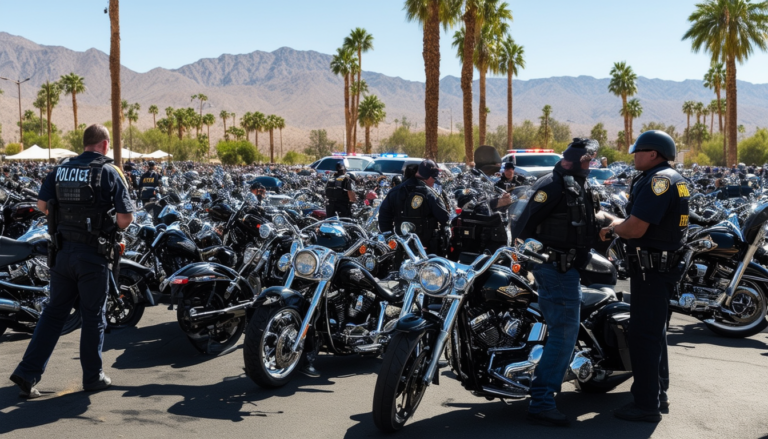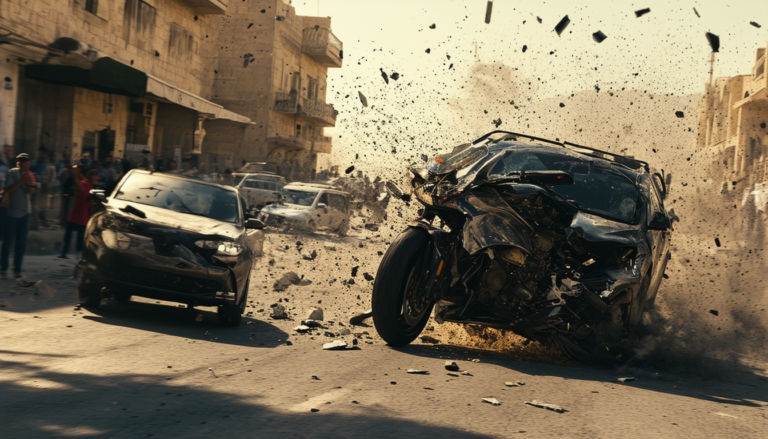Discovering the Motorcycle Bob Dylan Was Riding in His Pivotal and Enigmatic Crash
The world of music is often intertwined with stories of unexpected events that shape the artist’s journey, and one such instance is the motorcycle accident involving Bob Dylan on July 29, 1966. This incident not only marked a turning point in Dylan’s illustrious career but also sparked curiosity about the vehicle involved in this pivotal moment. Riding his beloved 1964 Triumph Tiger T100, Dylan’s crash remains a shrouded mystery, with details scarce and conflicting accounts emerging over the years. As we delve deeper into the circumstances leading up to the accident and its aftermath, we uncover the significance of this motorcycle and how it played a crucial role in Dylan’s life and artistry.
On a sunny summer day in 1966, a significant chapter of music history unfolded when Bob Dylan, the influential singer-songwriter, was involved in a motorcycling accident that would alter the trajectory of his career. Riding his beloved 1964 Triumph Tiger T100, the accident remains cloaked in mystery, leaving fans and historians searching for answers. This article delves into the details surrounding the motorcycle Dylan was riding during this pivotal moment and examines how this event impacted his life and music.
The Iconic Triumph Tiger T100
Bob Dylan’s choice of motorcycle, the Triumph Tiger T100, is a celebrated model in the realm of classic motorbikes. Known for its reliability and performance, it was esteemed by riders for tackling diverse terrains. The T100 model was particularly notable for its 500cc engine and four-speed transmission, making it a sought-after bike for adventure seekers. Its reputation for durability was highlighted when travel writer Ted Simon rode one over 64,000 miles during his journey around the world.
The Day of the Accident
On July 29, 1966, Dylan experienced a defining moment when he crashed his motorcycle in Woodstock, New York. Initial reports indicated that the accident was caused by the brakes locking up, a potentially dangerous failure for any motorcyclist. Though there were no widespread concerns regarding this model having such issues, the crash marked a turning point in Dylan’s life. Eyewitness accounts revealed that his wife, Sara, who was trailing behind, immediately rushed to his aid.
Injuries and Aftermath
While the exact circumstances surrounding the accident remain unclear—whether he slipped on something or was blinded by sunlight—what is known is that Dylan suffered severe injuries. Reports suggest that he broke several vertebrae in his neck. Rather than seeking immediate medical attention at a hospital, he chose to stay with his manager, Albert Grossman, and received care from a local doctor, showing his reluctance to expose himself to the public eye during this sensitive time.
A Shift in Musical Direction
The aftermath of the crash brought significant changes to Dylan’s career. Previously known for his politically charged music, the incident prompted him to reevaluate his approach to songwriting. Dylan later expressed that through this ordeal, he began to focus more on personal themes, channeling his inner thoughts and emotions into his work. The accident effectively halted his relentless touring schedule for eight years, allowing him to rediscover his passion for music away from the spotlight.
Lasting Impact and Legacy
Today, the crash continues to spark discussions about its profound impact on Dylan’s life and artistic evolution. While he no longer rides motorcycles, the Triumph Tiger T100 remains a symbol of his journey—a vehicle that not only represented freedom but also provided him necessary time for reflection and growth. This enigmatic event from 1966 stays etched in the annals of music history, illustrating how a single moment can precipitate a metamorphosis in both personal and artistic realms.
On July 29, 1966, Bob Dylan was involved in a motorcycle crash near Woodstock, New York, which transformed the course of his musical career. Riding a 1964 Triumph Tiger T100, this enigmatic incident remains shrouded in mystery, leaving fans and historians eager to understand not just the events of that fateful day, but the motorcycle itself and its significance.
The Triumph Tiger T100: An Iconic Model
The Triumph Tiger T100 has become an iconic motorcycle, celebrated for its reliability and performance. With a 500-cubic-centimeter four-speed engine, it was renowned among bike enthusiasts for its ability to deliver a smooth ride across various terrains. Much like Dylan’s music, this bike represented both adventure and freedom, captivating those who sought the thrill of the open road.
Historical Importance
In the realm of motorcycles, the Triumph Tiger T100 stands out not only because of its technical specifications but also due to its historical context. Originally launched in the early 1950s, it quickly became a favorite among riders and was even associated with famous personalities. Dylan’s accident on this model added yet another layer to its rich history, intertwining it with the journey of one of music’s most legendary figures.
The Impact of the Crash on Dylan’s Career
The incident undoubtedly caused a pivot in Bob Dylan’s career. Before the crash, Dylan was known for his politically charged music and continuous touring. However, after the accident, he shifted his focus toward more personal themes in his songwriting. The crash effectively halted his busy touring schedule for years, leading to a period of introspection and creativity that transformed his musical output.
Lessons Learned
For aspiring riders and fans alike, this incident serves as a reminder of the risks involved in motorcycle riding. Understanding safety measures, such as maintaining brake systems and being aware of road conditions, is crucial. It’s important for bikers to ride responsibly, keeping in mind that even well-loved models like the Triumph Tiger T100 can pose risks if mishandled.
Continuing the Legacy
Bob Dylan’s experience with the Triumph Tiger T100 continues to inspire riders and music lovers. Each ride on a similar bike represents not just an adventure, but a connection to a pivotal moment in rock history. The memory of the crash serves as an important chapter in Dylan’s story, reminding us how unforeseen events can reshape our paths forever.






